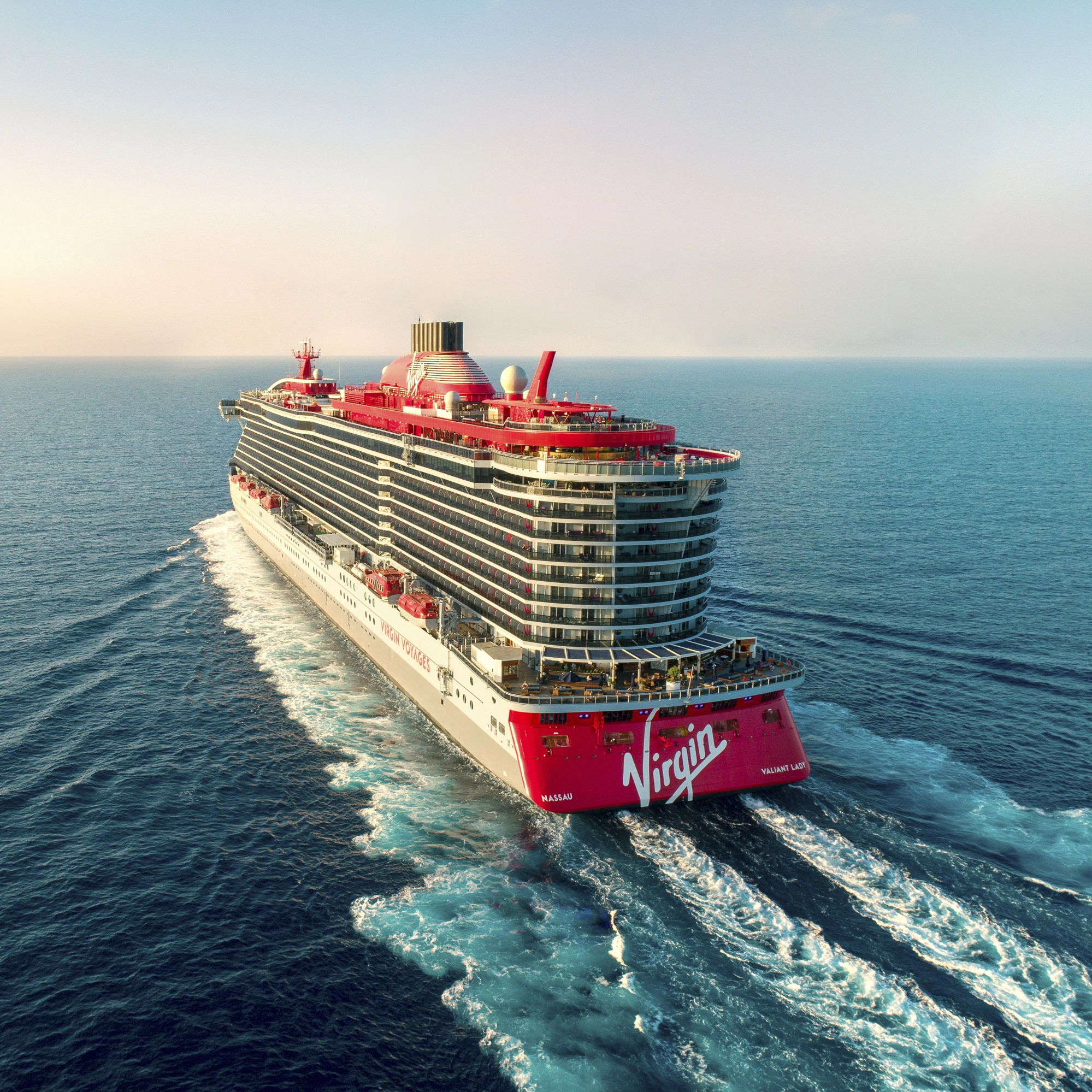Beam Me Up, Billionaires: How Florida Became the Frontier for Space Tourism
The private space industry has exploded in the Sunshine State in recent years, turning a sleepy region historically subject to the booms and busts of NASA, into ground zero for the ultimate Florida vacation—to outer space.
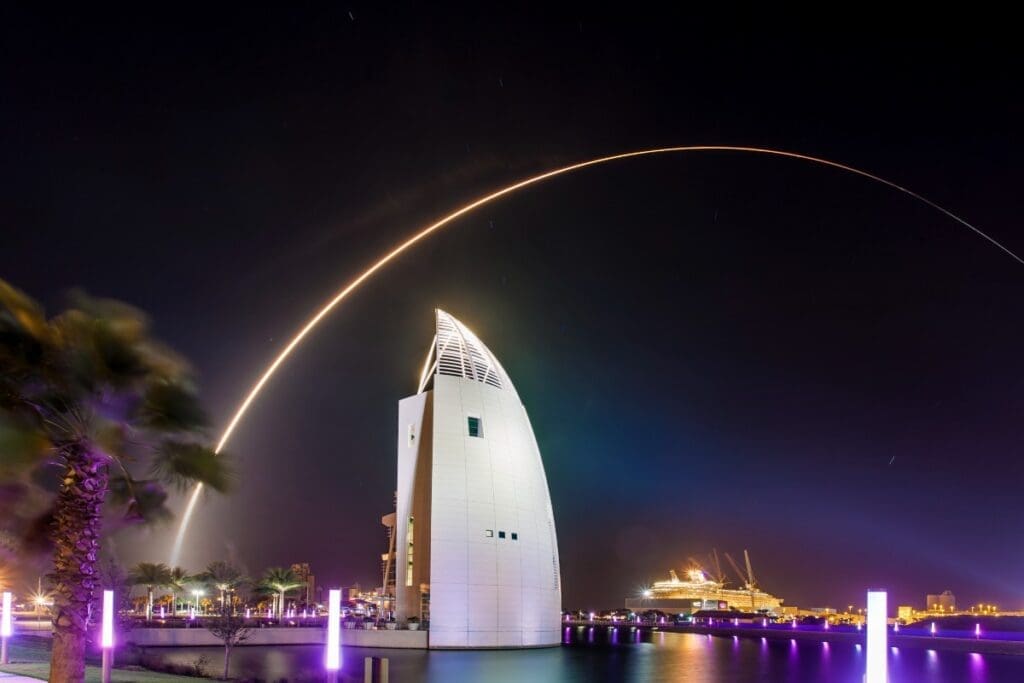
The Russians launched a dog named Laika. The U.S. launched a chimpanzee named Ham. The French launched a cat named Félicette.
But by far the strangest thing ever shot into space took off from Cape Canaveral on Feb. 6, 2018. That’s when a rocket blasted off from the Kennedy Space Center carrying a cherry red sports car occupied by a mannequin named “Starman” dressed in a spacesuit.
The sports car, a 2010 Tesla roadster, belonged to oddball billionaire Elon Musk, who owns Tesla. The rocket propelling the car into the stratosphere and beyond, the Falcon Heavy, was also created by a Musk company, SpaceX.
Even Musk, in a tweet sent prior to the launch, called the sports-car payload the “silliest thing we can imagine.” Yet the launch had a serious purpose: testing the Falcon Heavy, the largest currently operational rocket in the world.
The Falcon Heavy is the handiwork of SpaceX’s secret weapon: an engineer and propulsion expert named Tom Mueller. Prior to joining Musk’s company, he had been building a liquid-fueled rocket engine in his garage.
Four years after shooting his car into space, Musk is now one of the most controversial personalities on Twitter as well as the richest person alive. He’s worth a whopping $229.8 billion as of press time, surpassing even Amazon founder Jeff Bezos. Meanwhile, his Tesla is still wandering the cosmos, at times zipping by Mars. Musk has made clear that crewed Mars missions are his company’s eventual objective.
SpaceX is now the most successful and best known of several private space exploration companies that have been using Cape Canaveral as their launching spot, starting a new space race among a trio of billionaires: Musk, Bezos and Richard Branson, founder of the Virgin Group.
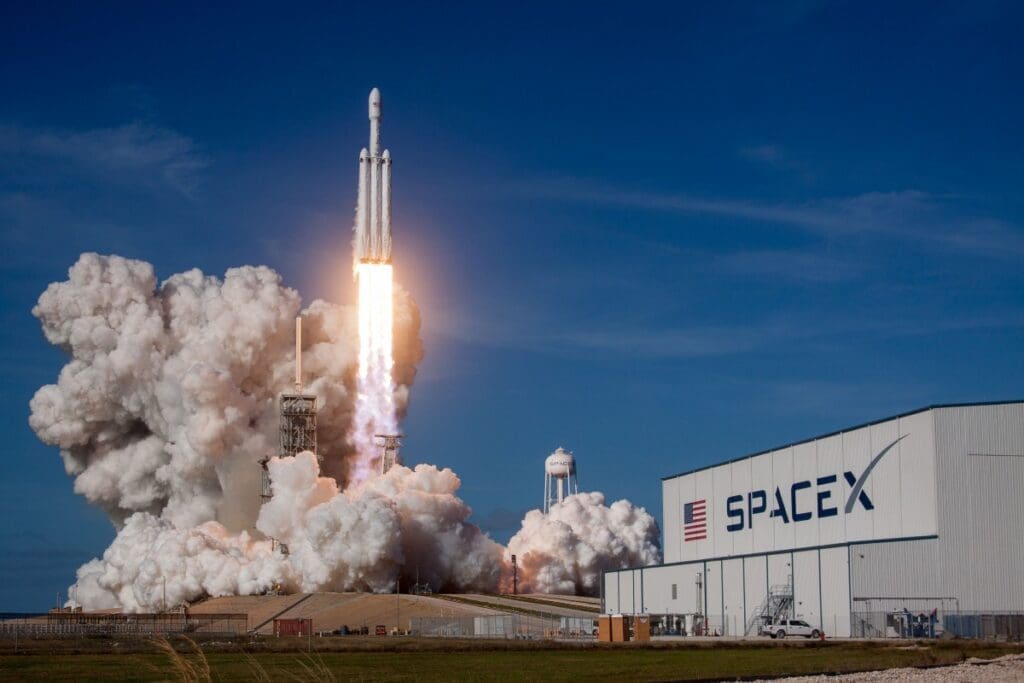
SpaceX is “the disruptive force that’s transforming the space industry,” said Dale Ketcham, vice president for government and external relations for Space Florida, the state agency overseeing the use of the state’s space-related resources.
But SpaceX is hardly the only name in town, Ketcham pointed out.
In August, for instance, when a SpaceX rocket blasted off from Canaveral carrying a lunar orbiter for South Korea to fly around the moon and study the environment there, it wasn’t the first to ignite its burners. A different privately run space exploration company, United Launch Alliance (ULA), had already taken flight from a launch pad less than two miles away, carrying a missile detection satellite for a government client: the U.S. Space Force.
This competition is exactly what Winston E. Scott was hoping would happen.
The Ups and Downs of Outer Space
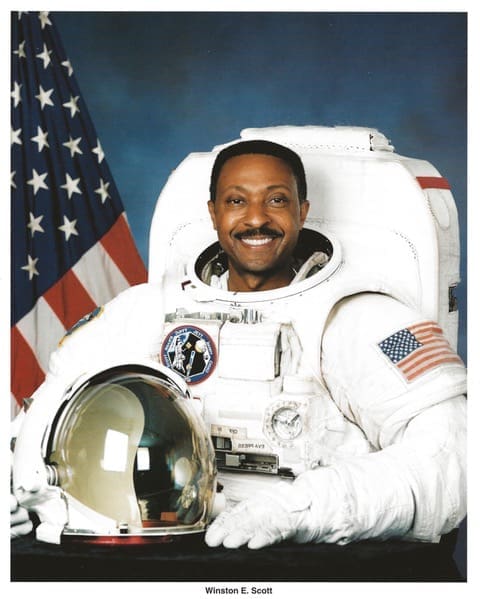
Scott grew up in Miami dreaming of humans someday zooming through space.
“The first book I ever checked out of a library was about Project Mercury,” America’s first human spaceflight program, he said. While Scott was fascinated by the concept of exploring space, “I never dreamed I would be a part of it,” he said.
After graduating from Florida State University, he pursued a career as a U.S. Navy pilot, and then spent seven years working for NASA during the 1990s. However, by the time he started working for NASA, the Project Mercury era was over.
NASA was originally created to propel an American into space to catch up with the Russians, who launched the world’s first artificial satellite in 1957. The agency shifted into overdrive as it worked to carry out President John F. Kennedy’s promise to put a human on the moon by the end of the 1960s.
During that decadelong drive, the area around Cape Canaveral boomed as engineers and scientists flooded into the once-sleepy beach towns of Brevard County. The region dubbed itself the Space Coast as new homes and businesses popped up all over. Many of the new businesses adopted space-related names. There was even a brand-new daily newspaper, Florida Today, with the “O” in the name made to look like an orbiting satellite.
Ready to plan your own mission? Here’s the companies that can take you to the stars.
The workforce at Kennedy Space Center peaked at 26,500 in 1968, according to Florida Today. But then Space Coast residents found out what any coal miner could have told them: It’s no fun living in a company town when the company is winding down.
Seven years later, the Center’s workforce had fallen to about 8,000. Former rocket scientists were pumping gas for a living. Florida Today reported stories of families leaving their keys in the front door of their houses as they were leaving town. They couldn’t find a buyer.
The first book I ever checked out of a library was about Project Mercury. I never dreamed I would be a part of it.
— Winston Scott
Then came the space shuttle program. From its first launch in 1981, it created a new boom on the Space Coast. By the late 1980s, the Canaveral workforce had swelled to 17,000 people, the newspaper reported.
That’s the era in which Scott finally got his space shot—two of them, in fact.
During his seven-year career with NASA, Scott, now 72, served as a mission specialist on two space shuttle flights. He performed space walks not once, not twice, but three times.
But after the Columbia disaster of 2003 killed all seven astronauts on board during reentry, shuttle flights stopped for more than two years.
Meanwhile, in 2004, President George W. Bush announced the shuttle program would end after construction of the International Space Station was completed. The shuttle program shut down in 2011. By 2012 a new bust had hit Cape Canaveral—employment had dropped back to about 8,000, according to reports.
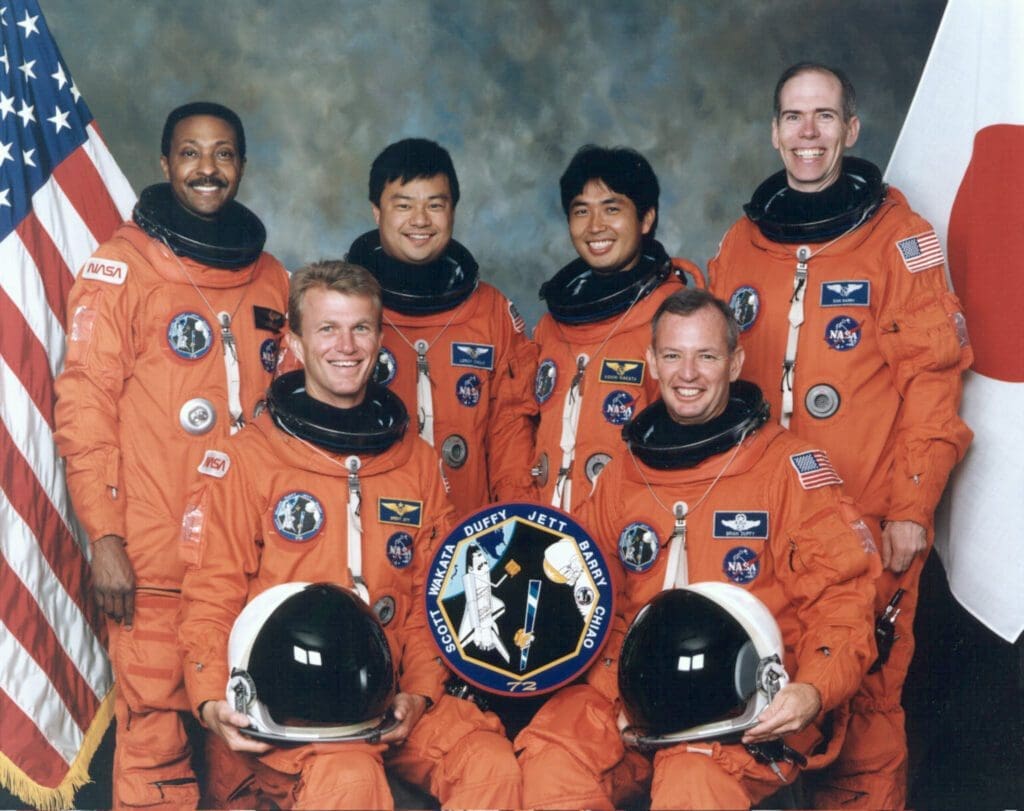
By then Scott, the ex-astronaut, was director of a state agency known as the Florida Space Authority, which in 2006 shortened its name to Space Florida. The agency functions much like a port or airport authority, overseeing and encouraging the use of government-owned transportation facilities. In this case, though, those facilities are for exploring space, not taking a cruise ship or a short flight in a Cessna.
The agency’s goal: Try to make the Brevard County area less dependent on the government’s space program and less susceptible to its ups and downs.
To Scott and the other members of the authority, the ideal situation would be to use the NASA-built facilities to accommodate the corporate spaceflight companies’ launch needs while also persuading them to build factories nearby.
“We were pushing to open up Kennedy Space Center” to private businesses, Scott said. “NASA is very good at cutting-edge science, but business is better at making things cost-efficient in order to get to space for less money.”
With NASA, he pointed out, only military or scientific personnel were allowed to board a spaceflight. Now, there are no such restrictions as SpaceX and other companies offer tickets for those who can afford it.
“Today anybody can fly,” he said, suggesting that soon it will be as easy and inexpensive to go to space as it is to fly from New York to Los Angeles. However, he joked, there may be similar problems to airline flight: “You’re going to Mars, but your luggage went to the moon.”
The New Space Race
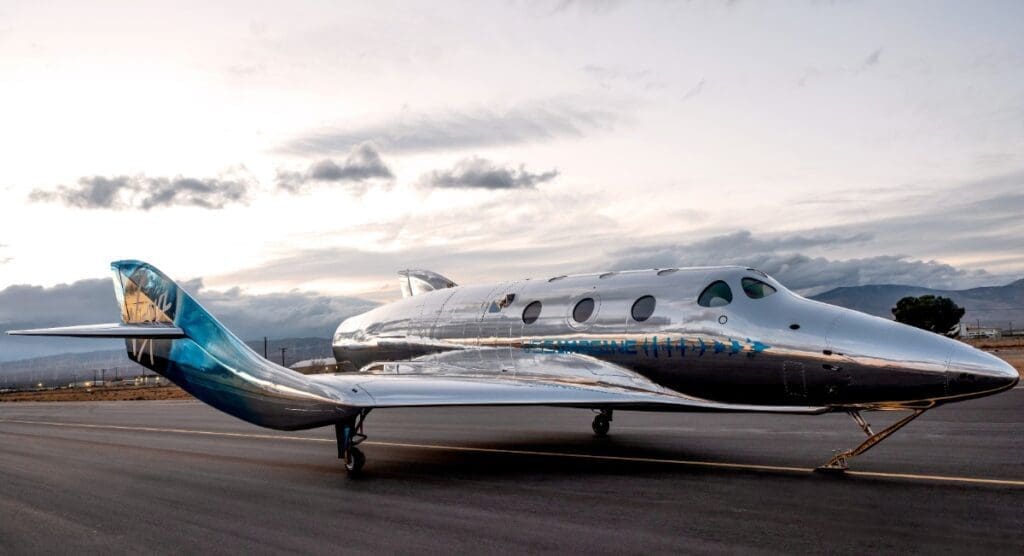
When NASA was the only name in space exploration, Brevard’s tourism-related businesses could expect no more than two or three launches a year to boost their customer numbers, said Lynda Weatherman, who for almost 30 years has served as president and CEO of the Space Coast Economic Development Commission. Now, thanks to the private companies firing off their rockets, as of August 2022 Cape Canaveral has seen a total of 35 launches this year. Most of them have been from SpaceX, which has sent more than 3,000 satellites into low-Earth orbit to build a worldwide system for its internet service. But not all of them were unmanned missions.
“The return of the crewed launches has heightened the level of interest,” said Peter Cranis, executive director of the Space Coast Office of Tourism. “People want to see those launches.”
He figures the launches carrying a human crew draw as many as 200,000 spectators. Many are families with “Mom and Dad bringing their parents and their kids,” Cranis said. “The grandparents may be reminiscing about the Apollo program, while the parents talk about seeing the shuttle.”
That’s a remarkable crowd considering the first privately operated outer-space flight with a human crew happened only two years ago. A SpaceX rocket took off in 2020 carrying a pair of NASA astronauts, Robert Behnken and Douglas Hurley, bound for the International Space Station.
The launch site was the Kennedy Space Center’s historic Launch Complex 39A—the same one that the Apollo 11 astronauts used when they were aiming for the moon.

The advent of private space exploration has marked another big change in the rocket business: Cape Canaveral is no longer the only location where rockets launch.
When Branson’s Virgin Galactic launched its first crewed suborbital flight in 2018, it took off from a complex in New Mexico. And when Blue Origin fired off its first crewed mission into the edge of space in July 2021, with Bezos, his brother Mark, 82-year-old pilot Wally Funk and 18-year-old Oliver Daemen, whose wealthy father had paid for his ticket, its rocket took off from a site in rural West Texas. A subsequent flight took off from the same location in October 2021 carrying Star Trek actor William Shatner, 90. Branson himself also rode in his own spaceship on a separate flight in July.
SpaceX and Blue Origin are the only private companies that have launched spacecrafts past the so-called “Kármán line.” That line, named for Hungarian scientist Theodore von Kármán, marks the boundary 62 miles up at which rockets and satellites can safely orbit the Earth without burning up or
falling back to the ground.
Money and Manpower
SpaceX officials declined repeated requests for an interview for this story, making it clear that they felt much too busy to talk:
“Unfortunately, we don’t have anyone available to participate—as you can imagine, it’s an incredibly demanding time for the team. We’re sorry that’s not the answer you were hoping for!”
Musk grew up in South Africa reading a lot of science fiction. His favorite: Isaac Asimov’s seven-volume Foundation series, which he described as a futuristic version of Edward Gibbon’s The History of the Decline and Fall of the Roman Empire.
He told The Guardian that that book series inspired him to start Space Exploration Technologies Corp., better known as SpaceX, in 2002.
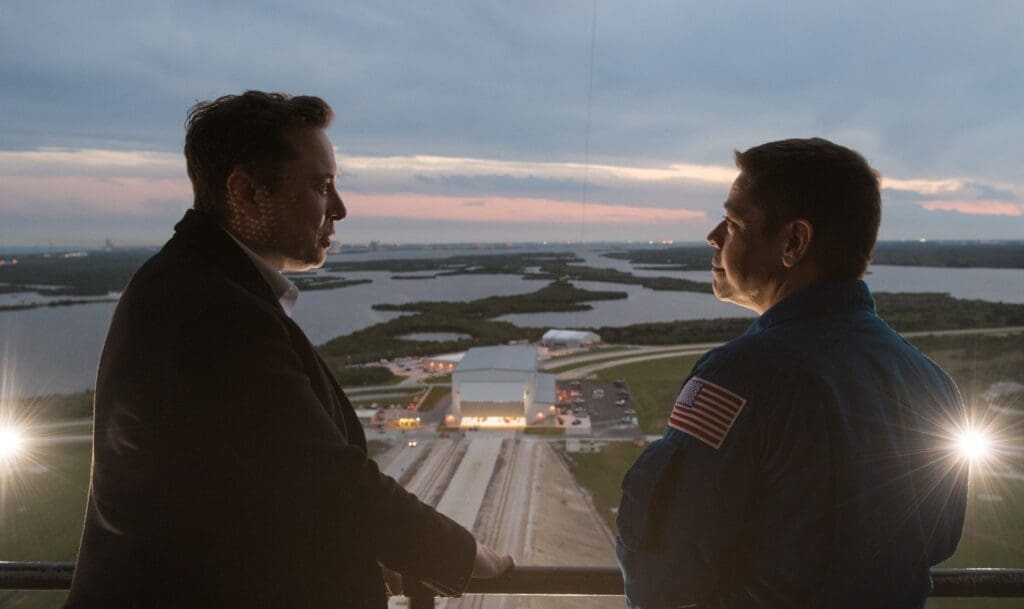
“The key thing for me,” he told the British newspaper, “is to develop the technology to transport large numbers of people and cargo to Mars. That’s the ultimate awesome thing.”
An expert on computer coding, Musk made his first billion by co-founding PayPal and selling it to eBay. He then began working on his ideas for Tesla, an electric car to save the planet, and SpaceX to explore other ones.
But SpaceX would have gone nowhere without Mueller, the son of an Idaho logger who has said he’s always been fascinated by fast engines. Our attempt to reach Mueller went unanswered as well.
According to the Musk fan site ElonX.com, Mueller was working at TRW, an aerospace company in California, developing liquid-fueled rockets, but he disliked being a cog in a large organization. In his off time, he built gigantic rocket engines. He joined a group of like-minded rocket builders called the Reaction Research Society, the oldest continuously operating amateur experimental rocket group in the U.S.
Musk heard about Mueller’s rocket-building skills and showed up at a warehouse where the Reaction Research Society was meeting, talked with Mueller and ended up putting him in charge of propulsion for SpaceX.
He was the man who would make sure the company’s rockets would boldly go where Musk wanted them—at a lower price than what the government paid—and then return to Earth for reuse.
Musk’s upstart company was at first considered a minor player in the aerospace industry. It battled ULA, a joint venture of established aerospace names Boeing and Lockheed Martin, over government contracts worth millions for launching military satellites. The big companies dismissed SpaceX as an “ankle biter,” according to a Washington Post story.
SpaceX sued the U.S. Air Force and, under a settlement, finally got the right to bid on contracts alongside ULA. That sense of rivalry remained. In 2016, a SpaceX rocket blew up on its Cape Canaveral launch pad, and the Washington Post reported that Musk questioned whether it could have been corporate sabotage (it was not).
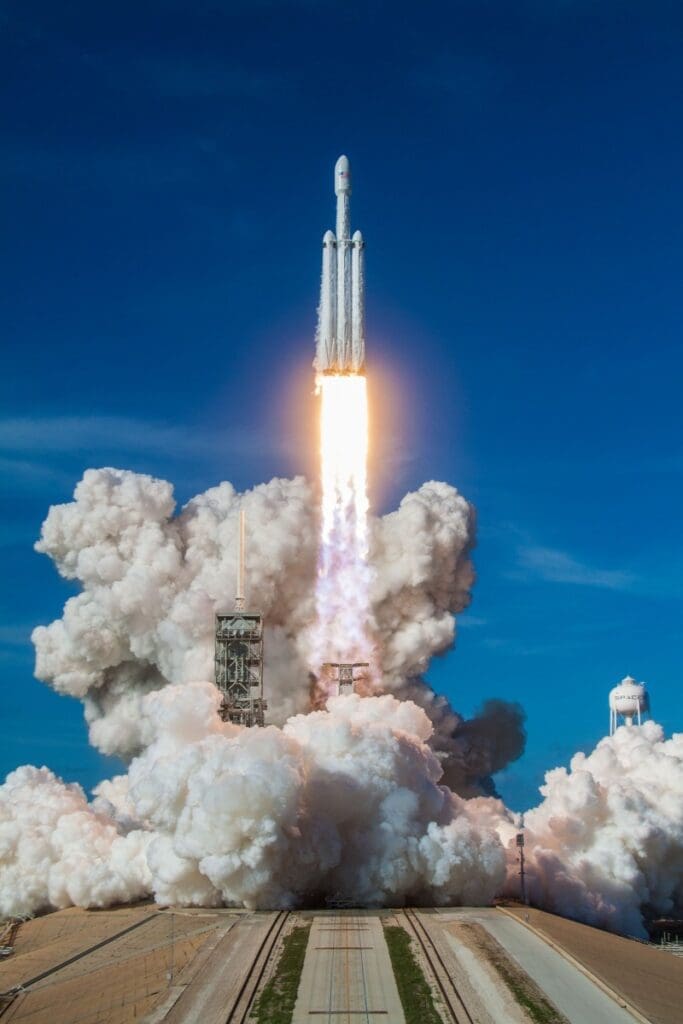
Winning those government bids proved crucial for the company’s future. In 2008, SpaceX won a NASA competition for the billion-dollar contract to fly supplies to the International Space Station. In effect, SpaceX had replaced the space shuttle.
That was the same year SpaceX became the first privately owned company to send a liquid-fueled rocket into orbit. That happened after three failed attempts, including one fiery crash of a rocket carrying the ashes of Star Trek actor James “Scotty” Doohan and Mercury astronaut Gordon Cooper. (Their ashes finally made it into space in 2012.)
The exact boundary of space is a hotly contested topic. Much of the international community believes it begins 62 miles up at the Kármán line, however the U.S. generally puts the boundary of space at 50 miles up. No matter the definition, these billionaires are pushing to launch their rockets higher, faster and cheaper than their competitors, so there are plenty more out-of-this-world flights in the works.
To the people on the Space Coast, it’s the “in the works” part that they particularly like.
Gateway to the Galaxies
Cocoa Beach and other Brevard cities have been doing everything possible to promote the area as the ideal spot for space travel in the U.S. In 1998, a Brevard resident even persuaded the Florida Public Service Commission to make the local area code “321” to mimic a countdown.
But for years, the Space Coast was only a place for launching rockets built elsewhere, Ketcham said.
Space Florida and the Economic Development Commission have been working to change that. By attracting more and more commercial space organizations—not only SpaceX—“we have a chance to consolidate everything here,” Ketcham explained.
The push started when the shuttle missions were ending, Ketcham said. The two organizations lined up several companies who promised to pull Brevard County out of the economic doldrums. “Then, the worldwide recession hit,” he said, “and all the companies that were going to come here had issues and never showed up.”
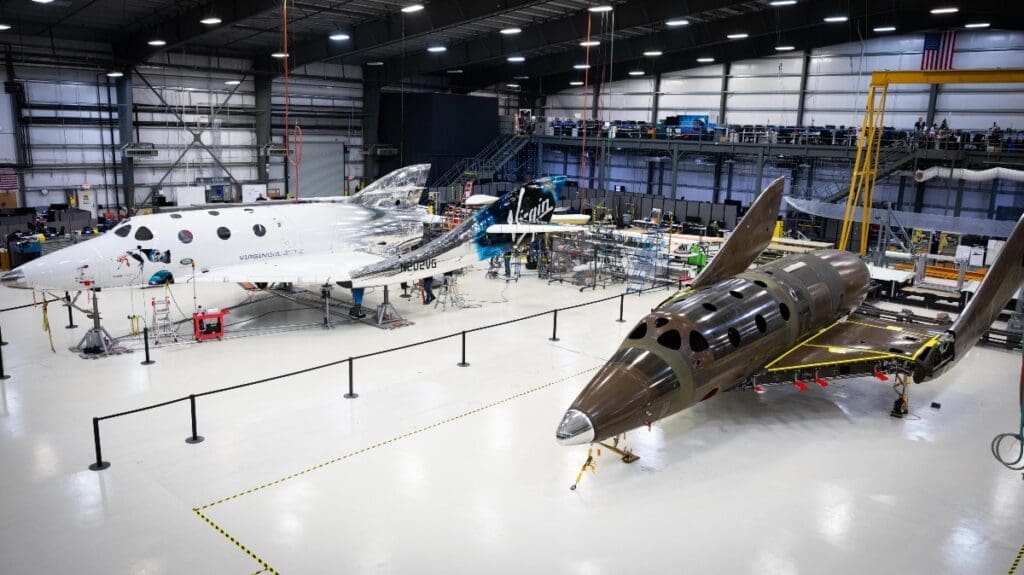
The second try proved the charm. When the state agency convinced Lockheed Martin to build NASA’s Orion space capsule near Cape Canaveral, Ketcham said, “that was the first time any piece of space hardware was built here.”
Now, there are companies building satellites, missiles and other aeronautical products along with those for the commercial space ventures. Weatherman mentioned that Lockheed Martin, Northrop Grumman, Booz Allen, and Embraer bring in not only manufacturing jobs but also high-tech engineering and design positions.
In 2015, Brevard scored big with Blue Origin, the rival to SpaceX and created by Bezos, a onetime Miami resident who got rich after creating Amazon. Although Blue Origin won’t shoot off most of its rockets there, it has agreed to put one of its manufacturing sites in Brevard—and more.
Suit up! Choose your outer space adventure here.
“Blue Origin’s Orbital Launch Vehicle will be designed, manufactured, launched and ultimately returned to Brevard County,” the Economic Development Council announced. It would be the first company to mount its entire project in Brevard County.
Thanks to all the companies in the private industry, the Space Coast is no longer a one-company town.
“We do more commercial space manufacturing here now than anywhere else in the country,” Ketcham said. “And the workforce now is bigger than it was with just NASA.”
Unlike Musk, Bezos’s company has been making progress that’s slow but steady, Ketcham said. He
predicted Blue Origin will soon make good on its promise of providing flight experiences into space for paying tourists and aspirational astronauts.
SpaceX has already taken a trio of tourists to the International Space Station. The three—an American, a Canadian and an Israeli—blasted off in April and spent more than a week as tourists who needed more than a souvenir T-shirt and a pair of swim trunks. They paid $55 million apiece for the round-trip ride, according to NPR.
Blue Origin—the oldest privately funded aerospace company in the U.S.—and Branson’s Virgin Galactic are at this point the only other companies licensed by the federal government for space tourism.
As if sensing that the Cape may someday become a little crowded, SpaceX recently test-fired a rocket at a facility it owns in Texas, hinting that it might relocate there at some point.
We do more commercial space manufacturing here now than anywhere else in the country.
— Dale Ketcham
While Weatherman characterized the size of the SpaceX workforce in Florida as “significant,” the potential loss of its business isn’t as scary as it would have been 10 years ago. There are plenty of competitors ready to step in and take its place.
Winston Scott, ever the optimist, predicted that soon the billionaire rocket men will take the next logical step and build resorts in space in order to attract more customers. He could foresee destination resorts on the moon or even on Mars someday.
Scott isn’t planning to be one of the passengers, though. He figures he’s taken enough rides that were out of this world. He does have some advice for those who want to follow in his space-suited footsteps, though.
“Have a good time,” he said, “but be safe.”

